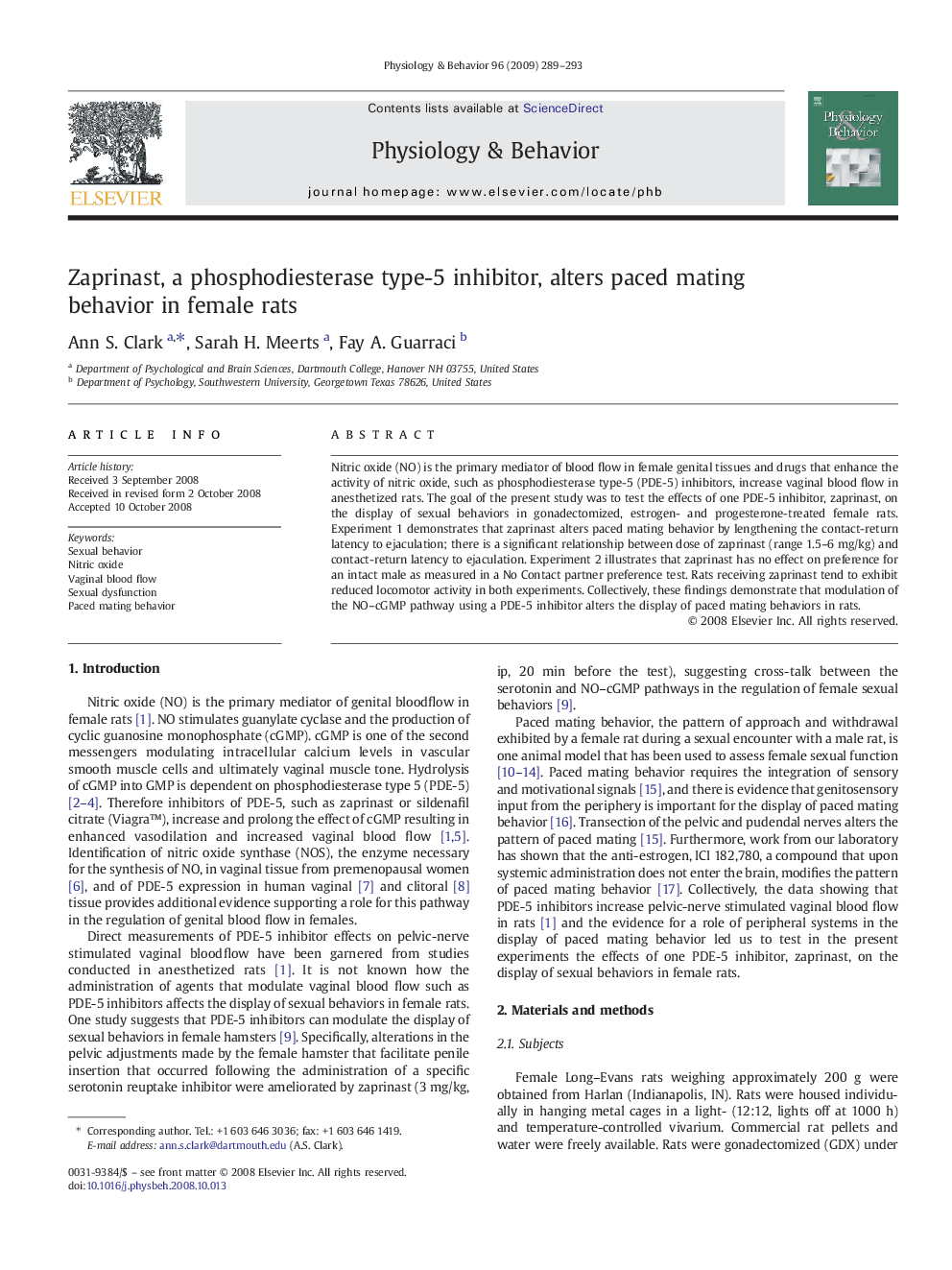| Article ID | Journal | Published Year | Pages | File Type |
|---|---|---|---|---|
| 2845222 | Physiology & Behavior | 2009 | 5 Pages |
Nitric oxide (NO) is the primary mediator of blood flow in female genital tissues and drugs that enhance the activity of nitric oxide, such as phosphodiesterase type-5 (PDE-5) inhibitors, increase vaginal blood flow in anesthetized rats. The goal of the present study was to test the effects of one PDE-5 inhibitor, zaprinast, on the display of sexual behaviors in gonadectomized, estrogen- and progesterone-treated female rats. Experiment 1 demonstrates that zaprinast alters paced mating behavior by lengthening the contact-return latency to ejaculation; there is a significant relationship between dose of zaprinast (range 1.5–6 mg/kg) and contact-return latency to ejaculation. Experiment 2 illustrates that zaprinast has no effect on preference for an intact male as measured in a No Contact partner preference test. Rats receiving zaprinast tend to exhibit reduced locomotor activity in both experiments. Collectively, these findings demonstrate that modulation of the NO–cGMP pathway using a PDE-5 inhibitor alters the display of paced mating behaviors in rats.
